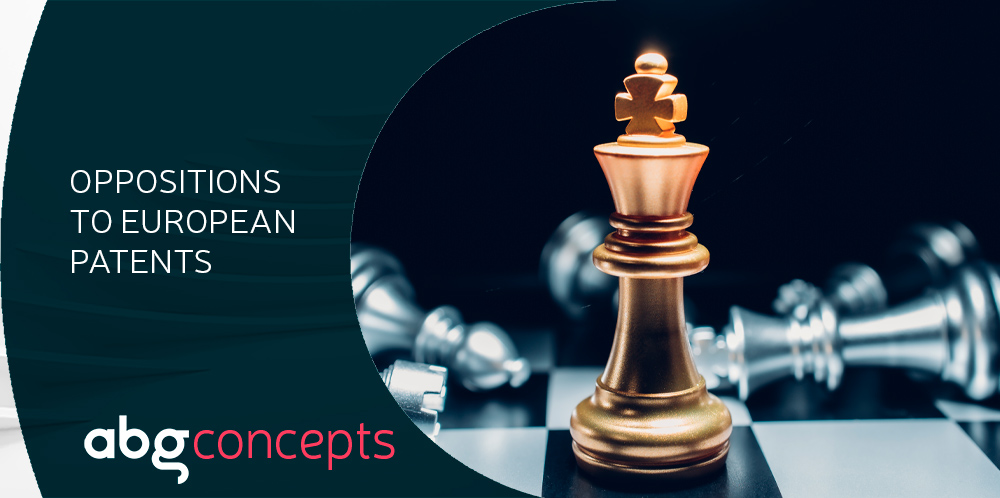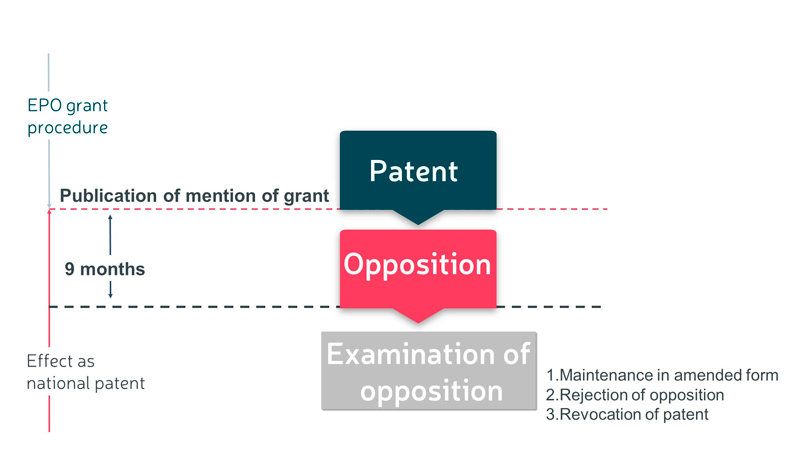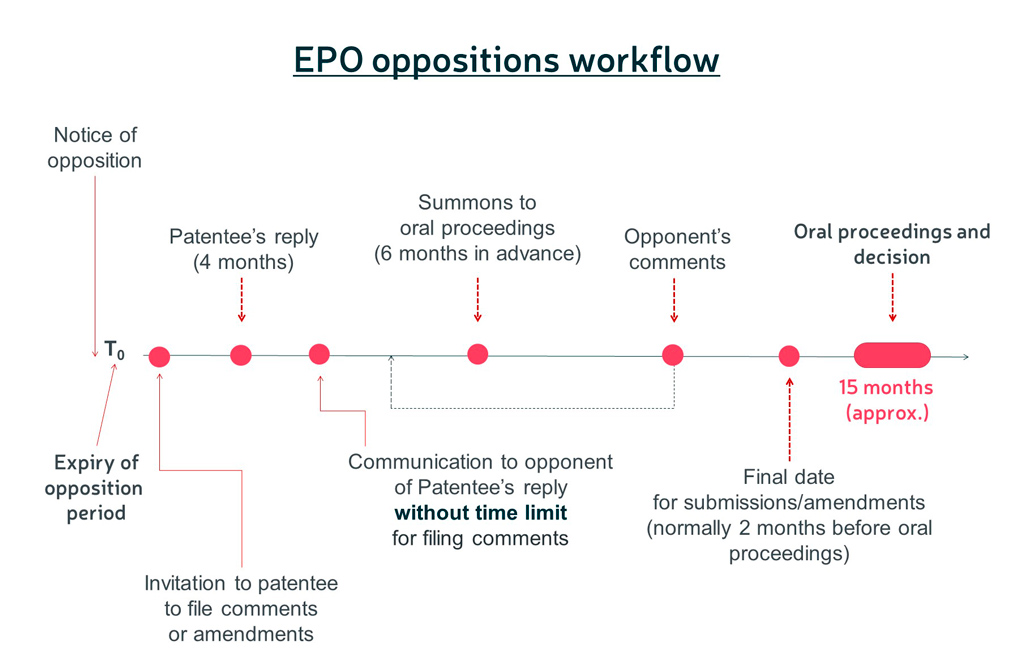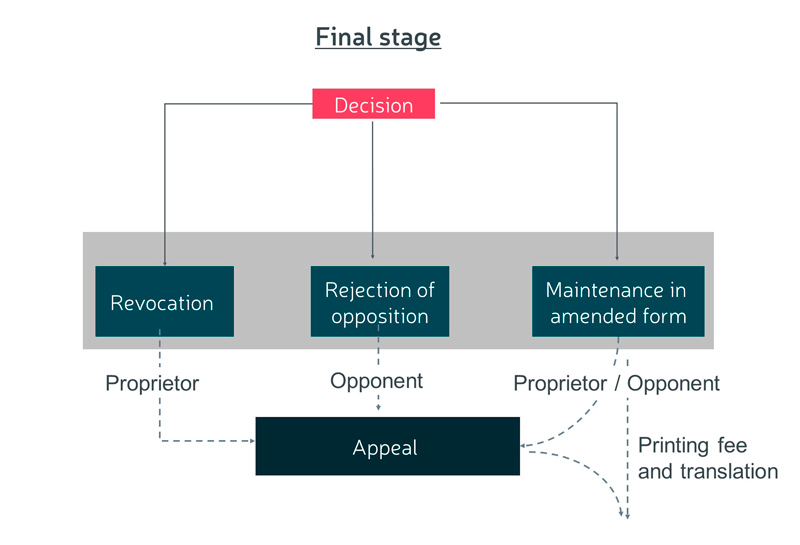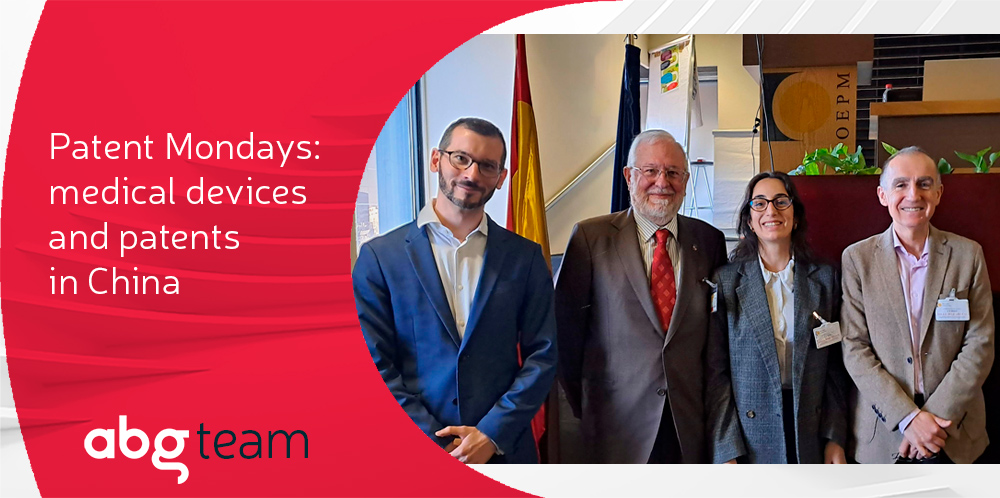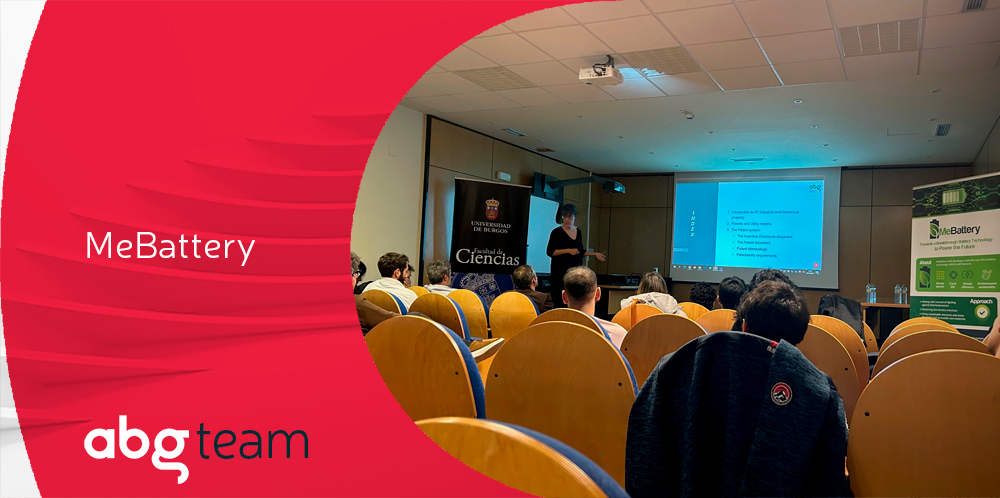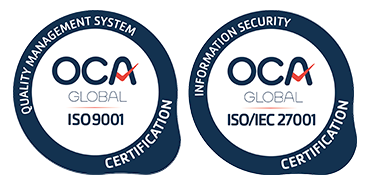After a European patent has been granted, third parties may challenge said grant with the aim of revoking it or maintaining it in a more limited amended form with respect to the scope of protection conferred by the patent as granted.
There are several routes to challenge a grant:
-
- the centralised and administrative route before the European Patent Office (EPO) by filing an opposition, or
- judicial routes before the national courts of each country where the European patent takes effect.
In this article we are going to discuss the centralised route of opposition before the EPO.
Opposition procedure before the EPO
The main advantage of the centralised route of opposition before the EPO is that it is a single procedure for all the member countries of the European Patent Convention where the patent takes effect, in other words, it is a general procedure whose outcome will apply to all the countries. This makes it possible to reduce costs and simplify the procedure.
A distinctive feature of oppositions before the EPO is that the opposition division, which is responsible for examining the oppositions filed before the EPO, consists of three technically qualified examiners. If necessary given the nature of the case, this division can be expanded to include a fourth legally qualified examiner.
When can an opposition be filed?
The period for filing an opposition is up to 9 months from the publication of the mention of the grant in the European Patent Bulletin. Strategically, it is recommended that the opponent file the opposition at the end of the 9 months, so that the proprietor has less time to prepare their response.
What are the grounds for opposition to a European patent?
The grounds for opposition are:
-
- added subject matter,
- lack of sufficiency of disclosure,
- lack of novelty,
- lack of inventive step,
- lack of industrial application,
- the claimed subject matter cannot be considered an invention (for example, scientific theories, mathematical methods, aesthetic creations, rules for performing mental acts, games or businesses, computer programs and the presentation of information),
- the claimed subject matter is an exception to patentability (inventions that go against public order or morality, plant or animal varieties or essentially biological processes for the production of plants or animals, methods for treatment of the human or animal body by surgery or therapy and diagnostic methods practised on the human or animal body).
In general, the most common grounds for opposition are typically added subject matter, lack of novelty, lack of inventive step and lack of sufficiency of disclosure.
It should be noted that the lack of clarity and the lack of unity of invention are not grounds for opposition, but the former can become a ground for opposition if it arises from amendments to the claims made by the patent proprietor during the opposition procedure.
What are the steps of the opposition procedure?
Filing
The opposition procedure is initiated by a third party, the opponent, filing a notice of opposition before the European Patent Office, stating the grounds for opposition, providing arguments and evidence (for example, biographical and experimental evidence) as necessary to support their arguments, and paying the opposition fee, which is currently €815. All these actions must be carried out within the period of 9 months from the publication of the mention of grant in the European Patent Bulletin.
The opponent cannot be anonymous, they must be identified. However, if an opponent does not want their identity to be known, they can file the opposition as a “straw man”, for example, a European patent attorney.
Examination of admissibility
After filing the opposition, the EPO examines the admissibility of the opposition, in other words, it checks that
-
- the opposition has been filed within the established period of 9 months,
- the patent for which the opposition is filed has been properly identified,
- the opponent and, if necessary, its representative have been correctly identified,
- the notice of opposition has been provided with arguments supporting the attacks made, which are usually attacks on lack of novelty, lack of inventive step, lack of sufficiency of disclosure and/or added subject matter,
- the notice of opposition has been signed, and
- the opposition fee has been paid
Reply to the opposition
If the opposition is considered admissible, the EPO communicates the notice of opposition and additional documents provided by the opponent(s) to the patent proprietor, and subsequently invites them to reply to the opposition within a period of 4 months.
In their reply, the proprietor can file arguments, as well as experimental and bibliographical evidence to refute the opponent’s attacks. The proprietor can also file one or more sets of amended claims, amendments to the description and/or figures.
The amendments made must be based on the content of the patent application originally filed, in other words, no new subject matter can be added nor can the scope of protection of the claims as granted be extended.
Another restriction on the amendments to the claims, description and/or figures is that said amendments must be occasioned by a ground for opposition even if the opponent has not invoked said ground, in other words, the claims, description and/or figures cannot be amended to resolve a lack of clarity.
Communicating the reply to the opponent
Next, the EPO communicates the reply filed by the patent proprietor to the opponent.
The opposition division will invite the parties (proprietor and opponent) to reply to the notices of the other party or to clarify any matter as many times as necessary. These invitations may have an associated period in which to provide a reply if the opposition division deems it appropriate.
It is very important to take into account that the entire opposition case must be filed from the beginning, since the admission of any relevant fact, additional evidence, new grounds for opposition or amendment to the claims, description and figures filed at a later time is at the discretion of the opposition division and it may not admit them. For the opponent, this implies filing everything with the notice of opposition, and for the proprietor, this means filing it with the reply to the notice of opposition.
Therefore, although there is no obligation to respond to the notices of the other party, if it is necessary to provide new evidence (bibliographic or experimental) or amendments to reply, this should be done as soon as possible to prevent the Opposition Division from not admitting said amendments or new evidence.
Oral proceedings
In general, the parties involved in an opposition procedure request oral proceedings before the Opposition Division.
Oral proceedings were traditionally held in person at the EPO offices in Munich or The Hague. Given the COVID-19 pandemic, and so as not to delay all pending opposition procedures due to the travel restrictions placed upon the parties (proprietors and representatives), the EPO implemented a pilot programme in April 2020 to conduct oral proceedings by videoconference. As a result of this initial pilot programme, the President of the EPO decided that as of January 2021 oral proceedings by videoconference before opposition divisions would no longer depend on the consent of all the parties and they would become the default option. According to a recent Decision of the President of the EPO, the proceedings will be conducted in this manner at least until 31 May 2022.
Together with the summons to oral proceedings, the Opposition Division will also issue a notification in which it indicates the matters it considers relevant to reach a decision, matters which will be discussed in the oral proceedings along with its preliminary, non-binding opinion. Likewise, the opposition division sets the date until which the parties (proprietor and opponent) may submit written contributions, whether they be arguments, evidence or amendments to the claims, description and figures. This date is usually two months before the oral proceedings.
During the oral proceedings, the matters indicated by the Opposition Division are discussed, such that both the proprietor and the opponent may present their arguments and reply to the objections or comments made by the other party or by the Opposition Division.
All parties involved in the oral proceedings, i.e., the representatives of the proprietor, of the opponent and also the Opposition Division, must study the case in depth since it is essential to be well-prepared. During the oral proceedings, there is no time to review the details of the case, the legal basis or the case law that applies to a particular situation or argument; instead, all this technical and legal knowledge must have been acquired beforehand. Therefore, the representative’s preparation and experience become evident during the oral proceedings. Their legal and technical knowledge, as well as their experience and strategy adopted in the oral proceedings play a key role in the outcome of the opposition.
After considering all the arguments and evidence provided by the parties during the entire opposition procedure, the opposition division reaches a decision at the end of the oral proceedings. This decision can be either to revoke the patent, or maintain the patent in amended form based on one of the more limited amended sets of claims provided by the proprietor, or maintain the patent as granted.
What can we do if we do not agree with the outcome of the opposition?
The proprietor or the opponent that has been negatively affected by the Opposition Division’s decision can file an appeal before the EPO’s Boards of Appeal to review this decision.
Probability of success of an opposition
The annual report that the European Office publishes every year includes an opposition rate, which is the percentage of the total number of European patents granted with an opposition period ending in that year and against which an opposition was filed. According to the most recent data published by the EPO dating back to 2020, the European patent opposition rate is 2.4%.
Regarding the outcome of oppositions, approximately one-third of patents are revoked, one-third are maintained in amended form and one-third are maintained as granted.
Since 2016, the EPO has been committed to making the opposition procedures as quick as possible to ensure legal certainty for all parties involved in the opposition procedure and for the public in general. With this commitment, the approximate duration of the entire opposition procedure is 15 months. In 2020, the set duration had already been reached, with a mean time of 15.5 months.
What do European patent attorneys do in opposition procedures?
The role of European patent attorneys in opposition procedures is to represent our clients, whether they be proprietors or opponents.
In all procedures before the EPO, it is very important to have a thorough understanding of the procedures, laws, regulations and case law that apply to both formal and substantive matters.
As experts in procedures before the EPO and with our extensive technical training, we as European patent attorneys can advise our clients on which strategy to follow, prepare notices of opposition or replies, represent the proprietor or opponent throughout the entire procedure, both in written procedures and in oral proceedings.
Recommendations for European patent opposition procedures
-
- File the entire opposition case from the beginning to ensure that everything is admitted to the procedure. For the opponent, this implies filing everything with the notice of opposition, and for the proprietor, this means filing it with the response to the notice of opposition.
- Choose a European patent attorney with experience in oppositions to be your representative so that they can decide, based on their experience, which information or arguments should be filed, which ones should not be submitted, which additional experiments may strengthen the case, which amendments to the claims are the most appropriate, etc.
- In the case of being a proprietor, it is important to share all possible information about the invention with the representative, including its weaknesses, whether it protects a commercial product or whether it is a defensive patent, and what could be dispensed with in terms of the scope of the claims. Thus, as representatives, we will be able to properly define the strategy to be followed and make a case that will give us the best chances of success in upholding the patent as granted or upholding it in amended form but maintaining adequate protection for the commercial interests of the proprietor.
- In the case of being an opponent, it is also important to share with the representative the relevance of the patent and which claims are the most problematic ones. As an opponent, it is also a good idea to be willing to conduct experiments to support arguments against the patentability of the invention that we oppose. Thus, as representatives, we will be able to properly define the strategy to be followed and make a case that will give us the best chances of success in revoking the patent or maintaining it in amended form so that it no longer affects the commercial interests of the opponent.


